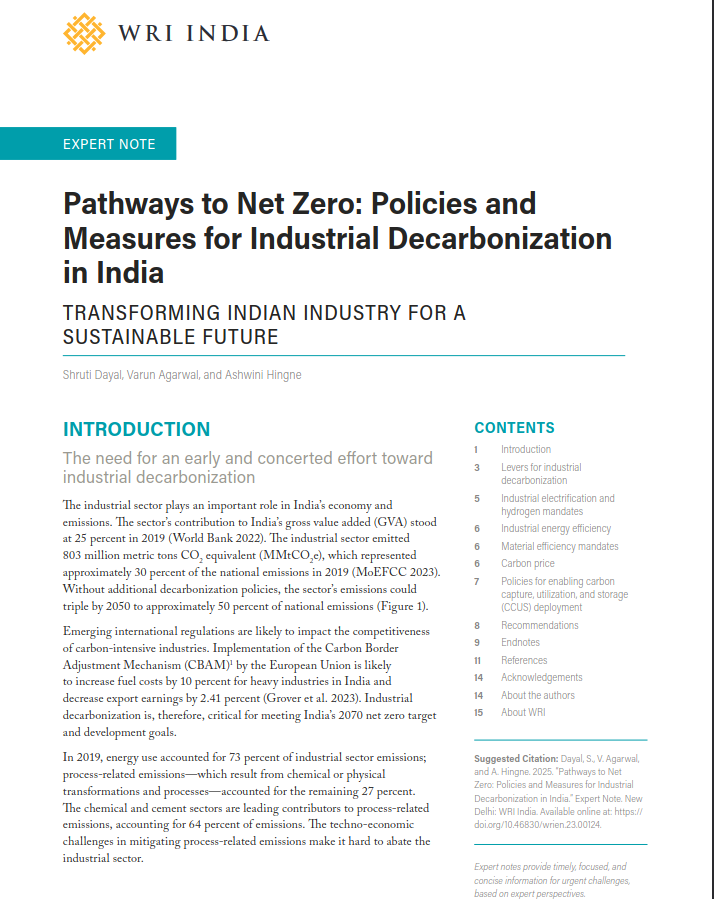India’s Tamil Nadu Could Become a Renewable Energy Powerhouse
by -
This blog post originally appeared on Insights.
Tamil Nadu, India’s sixth-most populous state, has emerged as a major hub for renewable energy over the last decade. More than one-third of its installed capacity—about 8,000 megawatts—now comes from renewable energy sources like wind and solar.
Still, the state’s clean energy markets can go further—research shows that Tamil Nadu’s renewable energy potential is close to 680 gigawatts (GW), 85 times its current installed capacity and comparable with the U.S. fossil fuel power plant capacity (781 GW) in 2012. Harnessing local renewable energy resources could yield important economic development benefits for the state; but government, industry and the utility will first need to work together to address some key challenges.
Increasing Renewable Energy Would Yield Many Benefits
Tamil Nadu achieved its current level of renewable energy development largely through government subsidies, such as depreciation benefits and generation-based incentive mechanisms. The state also boasts many large electricity consumers—industry and manufacturing accounted for nearly 50 percent of GDP from 2013-2014. These companies are increasingly using renewable energy because it’s becoming more cost-competitive and reliable compared to traditional power sources. This private demand can spur renewable energy development throughout the state and India, helping to reduce emissions and shift the country onto a low-carbon growth path in line with Prime Minister Modi’s recent climate action commitments.
But there are reasons beyond these to expand Tamil Nadu’s renewable energy supply, such as:
Increasing Power Supply
In a country where 300 million people still lack access to electricity, Tamil Nadu’s availability of reliable electricity supply attracted many industries to the state. Yet even in Tamil Nadu, the electricity demand-supply gap is now a chronic problem. Last year, the gap between peak demand and supply was over 8 percent, with an unmet peak demand of more than 1,000 MW.
The government has responded by imposing a 20 percent demand restriction on industrial and commercial electricity users. During the peak usage hours, this restriction may be as high as 90 percent of demand, resulting in severe shortages in an economy that depends on robust manufacturing and technical services. Getting more power sources online—namely, wind and solar—could close the demand-supply gap and allow businesses to thrive.
Financial Benefits and Supply Stability
Despite increasing costs, the Tamil Nadu Generation and Distribution Corporation Limited (TANGEDCO) did not revise its electricity tariffs for seven years (2004-2011). The tariffs were eventually raised by 37.5 percent in 2012 and 15 percent in 2014. However, the significant revenue gap of USD $4.24 billion is still hurting TANGEDCO’s ability to contract for power and meet the supply gap.
Allowing large consumers to have greater access to energy in the form of renewables, coupled with improved balancing and storage, might help bring on a more stable supply of power quicker. Plus, renewables are becoming increasingly affordable, creating a financial benefit in generation costs that can be passed on to consumers. Recent research shows that generating power from wind and solar in India will likely fall below the cost of generating power from imported coal by 2020.
What Will it Take to Increase Renewable Energy in Tamil Nadu?
Achieving greater renewable energy penetration would undoubtedly yield benefits, but getting there will require overcoming some key barriers. The last couple of years have not been ideal for renewable energy promotion in the state. For one, shortages in transmission system capacity prevented wind generators from pumping in their output, despite them being ready to generate. Plus, the Solar Portfolio Obligation, which would have required that a certain percentage of industrial and commercial users’ electricity come from solar power, was overturned by the Appellate Tribunal for Electricity (APTEL). How this plan gets designed and implemented will have a large impact on the solar market.
Expanding Tamil Nadu’s renewable energy capacity will require regulatory certainty that provides long-term clarity on the costs of using the grid to source renewable energy, and that addresses utility concerns about system impacts. Consumers, producers and vendors also need to find common ground and make their needs known to Tamil Nadu’s regulator and utility.
That’s where WRI’s Green Power Market Development Group (GPMDG) can play a role. The group connects would-be renewable electricity consumers with producers. Originally launched in Karnataka, the GPMDG is now establishing a foothold in Tamil Nadu.
Over the coming months, the GPMDG will work to understand companies’ concerns on energy policy and regulations, and work with regulators, utilities and consumers to find solutions for addressing them. We’ll also produce a renewable energy procurement guide that will help consumers understand the opportunities for reducing costs through increasingly affordable renewable energy.
Tamil Nadu’s clean energy future is bright—but only if it capitalizes on the opportunities before it.


